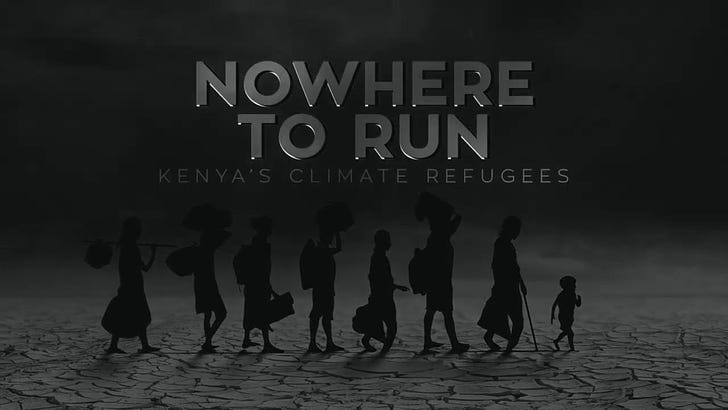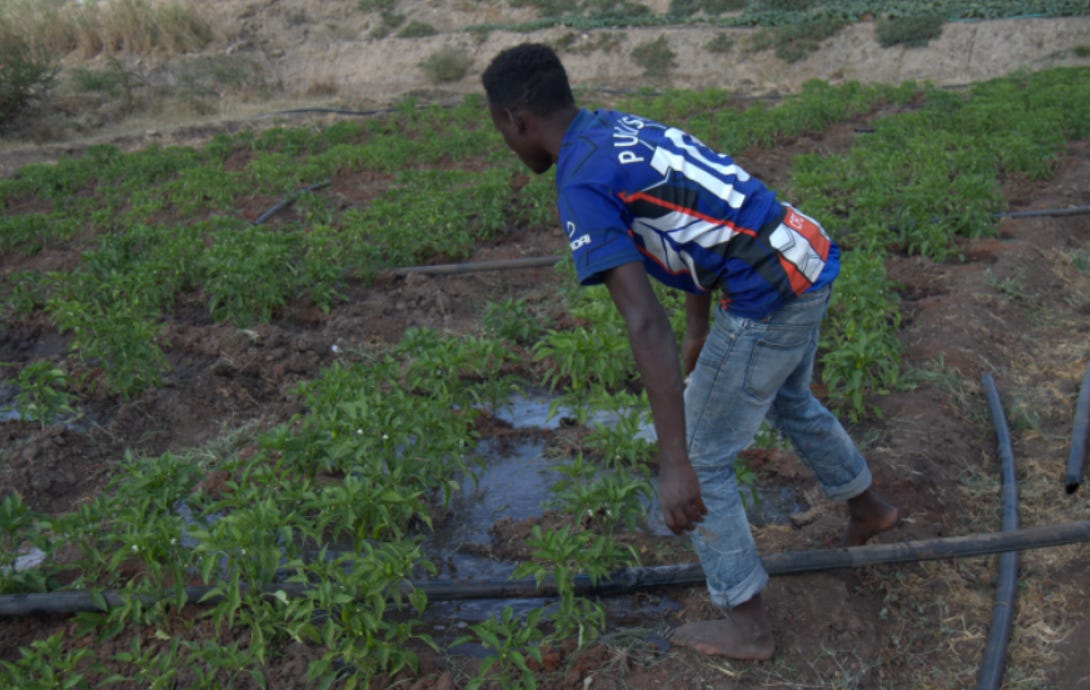World leaders are set to meet in Egypt, on November 6th for the COP27. COP stands for Conference of the Parties-Countries who agreed to the United Nations Framework Convention on Climate Change in 1992. This is a 2 week event convened by the United Nations for climate negotiations. This is a key event as we continue experiencing the effects of climate change in Kenya, Africa and the world as a whole.
Africa Uncensored team has worked on different pieces on Climate Change in Kenya as we gear up for the COP27. From water shortage in our major towns to climate refugees in Nakuru and Baringo Counties and the shrinking of the Mangrove forests along the Kenyan Coast.
In this week’s edition of The Deep Dive Newsletter, we reflect on climate change, COP 27 and our production crew perspectives during the stories execution.
Dive in!
COP 27 in Egypt: A great start for developing countries in the climate financing discussions. By Raquel Muigai.
In the deepest parts of Garissa, Northern Kenya, everyday dozens of livestock, and wildlife are left gasping for air as they near their death. In Kajiado, the pastoralists are also reading from the same script. In a nutshell, the earth is exhausted and is choking every vulnerable living species.
It is barely a week before the world comes together in the green city of Sharm El-Sheikh in Egypt for the UN Climate Change Conference (COP 27). Big deal? Definitely yes! Being hosted on African soil, the conference gives the continent a great start as time and time again Africa has felt short-changed in the conversations held regarding climate change, especially in calls for channelling additional financial support to countries experiencing impacts.
During the COP26 World Leaders Summit Plenary Session in November 2021, the then Kenya’s president, Uhuru Kenyatta, was concerned that the item of special need and circumstance of Africa was not adopted previously.
“We would like to see ambition on adaptation and loss and damage - with climate impacts increasing, provisions to help the most vulnerable to adapt, including through increased financial support, should be strengthened,” Uhuru said.
At the end of COP26, it was decided that discussions on a potential financing facility for loss and damage will take place in a new format, the Glasgow Dialogue. A three-year series of discussions set to end in June 2024.
The first one which took place in June 2022, in Bonn, Germany was unproductive. Developing countries hold that the effects of climate change are due to the emissions caused by the developed countries. An argument that would see the developing countries get compensated for, but an argument that the US and European Union rejected to subscribe to.
In Kenya, extreme weather events including floods and droughts, lead to losses of 3 – 5% of the country’s GDP annually. The country is currently experiencing it worst drought in 40 years as per the United Nations report. With the increase in food prices and basic commodities, the finances pulled together to alleviate human suffering in the affected regions like Garissa, Baringo and Kajiado are far from doing so.
COP27 is a big deal for Africa if they stay united. The first agenda will be to include the loss and damage financing topic in the negotiations so that other vulnerable countries outside Africa will have a sense that their priorities are being addressed.
Two times in a row, developing countries have been promised US $100 billion per year but it has not yet been delivered today yet again another pledge of 2023.
COP27 kicks off on 6th November 2022. Will it convert the promises we made in COP 26 to action, or will it serve as a reminder that those promises were merely ere diplomatic statements thrown around to allow the world gasp for air beneath the chocking effects of climate change?
Nowhere To Run: Kenya’s Climate Refugees by Cynthia Gichiri
Nowhere To Run is a story that gets you thinking about your individual contribution to climate change and how it affects others. When we hear about climate change and its effects, we seldom consider homelessness as one of the repercussions. In fact, as Elijah Kanyi and I were on location, we were overwhelmed with the desperation and suffering of the affected families. We wondered how we got to this point where nature has completely turned against humanity; yet the current drought ravaging our country and the endless flow of statistics on the effects of climate change continue to spell doom for millions in Kenya and across the continent. As we approach COP27, I hope this year’s meeting will be different and that we will see more action than speeches and pledges. This story is also a call to policy makers in Kenya to come up with people-centered measures of mitigating climate change as well as compensating the affected.
The Water Crisis in Nairobi by Wambui Mwaura
With climate change stories becoming a new reality in the news, one key human need which is set to be deeply impacted by this is water supply. As far back as Nairobi residents can remember, there has always been the issue of water rationing. Even as the population of the city continues to increase, and the rainfall patterns becoming more and more unpredictable, the issue of critical water crisis-a real and present danger- is now staring the residents of, not just Nairobi, but Kenya at large in the face.
The documentary 'Water Crisis in Nairobi' sought to have an in-depth look at what the factors are behind the water shortages facing the residents. What lays bare is how much of the forest cover of, where was once referred to as a place of cool waters, has fallen into deforestation; from 7000 hectares in the 1930s to only 1200 hectares presently.
As I sit down with my co-producer Clint Obere to speak with Engineer Nahashon Muguna, the Managing Director of Nairobi Water and Sewerage Company about the state of affairs on the prevalent water shortage in the city, one thing quickly becomes evident to me; that the struggle with this water crisis is a fight of our lives. This interview left me thinking how as a country, not just residents of the city of Nairobi, we must do everything in our power to combat this existential threat to our lives and livelihood.
The realization that the bodies tasked with supplying water to Nairobi’s residents are still using old infrastructures that were put in place years ago is shocking to me. That it has taken this long for the government to begin the construction of dams and improving on the existing infrastructures in a bid to accommodate the increasing water demands due to rural-urban migration is disappointing. Also, it is disheartening to learn that even as drought ravages many parts of the country, most of the excess rainwater goes to waste, as there is simply no efficient infrastructure in place to collect them. I find it encouraging however, to see institutions like Kibera Town Center-at the heart of the informal settlement Kibera- and their initiatives in alleviating the climate change induced water shortages to residents who are in dire need of the precious commodity.
Planting as many trees as possible might be the only viable way to combat water shortages and invariably, climate change as the Nairobi Forest conservancy Chief Mr. Francis Kariuki puts it. I'm glad that the new Kenyan government has acknowledged not just water issues, but the severe drought currently facing many parts of the country and there are calls to plant more trees to try and reduce the effects of climate change.
It will be interesting to see how many of the projects and dams under construction from the Northern Collector will be completed in time and how it will improve the overall water supply in the city of Nairobi.
Water in the Dryness by Calvin Rock
As parts of Kenya languish under the brunt of drought, an excursion to Yatta in July got me thinking: isn’t there something that can be done? While the answer to this question is neither an easy nor direct one, certainly there are measures that can be undertaken to adapt to the effects of climate change. Climate change is already a rolling stone and the pangs of its effects are already biting, hence the more appropriate action would be to give adaptation measures as much effort as mitigation measures.
My story, as a fellow for the HIVOS climate change reporting fellowship, focused on the efforts of a section of people in Makutano, Yatta in Machakos County to adapt to the problem of water scarcity. Prompted by media reports in 2007 that residents of Yatta had resorted to eating dogs and donkeys due to perennial drought, Bishop Titus Masika decided to abandon his ministry in Nairobi for a ‘higher’ calling. Almost 15 years later, over 6000 farmers who believed in his initiative Operation Mwolyo Out now no longer suffer the effects of water scarcity.
Mwolyo is a Kamba word which means ‘relief food’. The Bishop was determined to end the people’s dependence on mwolyo and did this by calling on the villagers to dig dams which would store water during rainy seasons. They use the reservoir water to irrigate their crops during dry seasons. When we visited, Makutano hadn’t seen rain in three seasons but still crops were doing well in a number of the farms. Perhaps the ingenuity of water harvesting may not apply to all rain-scarce regions, yet it remains a great step towards adapting to the effects of aridity. Read here on how the people of Makutano are thriving in sustainable agriculture despite water scarcity.
Editorial Director: John-Allan Namu
Assignment Editor: Sam Munia
Social Media Manager: Muraguri Gitahi
Contributors: John Allan Namu, Raquel Muigai, Calvin Rock, Wambui Mwaura and Cynthia Gichiri.
Before you go…
Thank you for your support in reading and sharing our content! We work very hard on it and continue to go to great lengths to deliver independent hard-access journalism and insightful content. To support the work done by our journalists, you can send us a contribution! Click on this link and follow the prompts.




